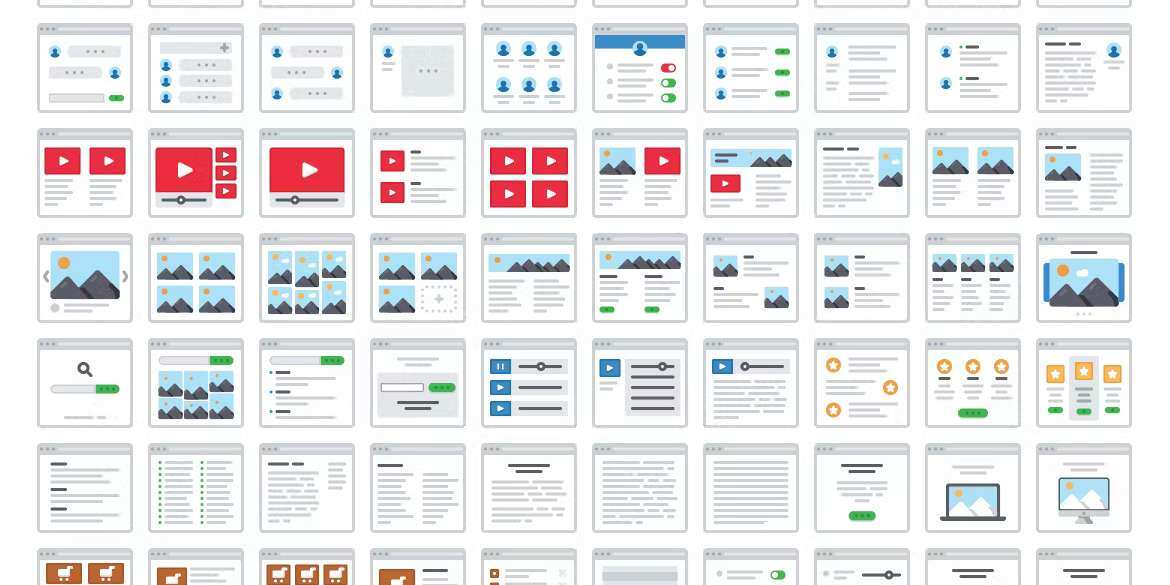Testing and refining a brand identity are crucial for ensuring that it resonates with the target audience and stands out in the market. Here are some effective methods to do so:
1. A/B Testing
A/B testing is a critical process for tech startups aiming to refine their brand identity, as it allows for data-driven decision-making rather than relying on guesswork. This method involves comparing two versions of a product or marketing element to see which one performs better, enabling startups to make incremental improvements based on actual user feedback and behaviour.
For example, by testing different versions of a website's homepage or email campaign subject lines, startups can identify which elements most effectively engage users, drive conversions, and reflect the brand's identity. The key to successful A/B testing is focusing on one variable at a time to accurately measure its impact.
This approach not only enhances the user experience but also solidifies the startup's brand identity by ensuring that every aspect of the brand resonates with the target audience.
Moreover, A/B testing reduces the risk of failure and increases the chances of success by continually optimising the brand's presentation and messaging to meet customer preferences and market demands.
2. Online Panels and Surveys
Utilising online panels and surveys, specifically online focus groups and surveys with questionnaires, is a strategic approach for tech startups to test and refine their brand identity. Online focus groups allow for real-time, interactive discussions with a targeted group of consumers, providing qualitative insights into their perceptions, experiences, and expectations of the brand.
This method can reveal the emotional and rational responses to a startup's branding efforts, offering a nuanced understanding of the brand's resonance with its audience. Surveys and questionnaires, on the other hand, offer a more quantitative approach, allowing startups to reach a broader audience and gather data on brand recall, recognition, and perception.
By asking specific questions about the brand's attributes, startups can measure their brand's strength and identify areas for improvement. These tools can be particularly effective when combined, as they provide both depth and breadth of insight, enabling startups to make informed decisions about their brand strategy and ensure it aligns with customer expectations and market demands.
3. Social Media Ads
Using social media ads to test and refine a startup's brand identity offers a dynamic and interactive platform to gauge audience response and adjust branding strategies in real time. Social media platforms provide a unique opportunity for startups to experiment with different aspects of their brand identity, such as messaging, visual elements, and overall brand voice, through targeted advertising campaigns.
By leveraging the detailed analytics available on these platforms, startups can measure the effectiveness of different ad variations in engaging their target audience, tracking metrics such as click-through rates, engagement rates, and conversion rates.
This data-driven approach allows startups to iteratively refine their brand identity based on actual customer feedback and preferences. Furthermore, social media ads can reach a wide yet targeted audience, making it an efficient way to test branding elements across diverse demographics and psychographics.
The immediacy of social media also enables startups to quickly pivot their branding strategy based on the performance of their ads, ensuring that their brand identity resonates with their intended audience and stands out in the competitive tech landscape.
4. Landing Pages
Landing pages are a powerful tool for startups to test and refine their brand identity, offering a focused environment to experiment with different branding elements and messaging strategies.
By creating multiple versions of a landing page, each highlighting a different aspect of the brand's identity, startups can conduct A/B testing to determine which elements resonate most with their target audience.
This approach allows for real-time feedback on the effectiveness of various brand messages, visual styles, and calls to action, enabling startups to iteratively refine their brand to better align with customer preferences and market demands. Landing pages are particularly effective because they can be tailored to specific segments of the audience, providing insights into how different groups perceive the brand.
Additionally, the data collected from landing page interactions, such as conversion rates, time spent on the page, and click-through rates on specific elements, provides valuable metrics for evaluating the impact of brand identity choices.
This method not only helps startups develop a more compelling and cohesive brand identity but also enhances the overall user experience by ensuring that the brand's digital touchpoints are optimised for engagement and conversion.
5. Brand Perception Tools
Utilizing brand perception tools to test and refine a startup's brand identity is a strategic approach to understanding how the brand is viewed by consumers and the market at large. These tools, such as surveys and market research data, can provide valuable insights into the brand's strengths, weaknesses, and the overall impact of its identity.
By measuring consumer perceptions, startups can identify which aspects of their brand resonate with their audience and which areas may require adjustments. This feedback is crucial for making informed decisions about brand strategy, messaging, and visual elements. For instance, if a tech startup's brand is perceived as innovative but not user-friendly, the company can focus on refining its messaging and user experience to better align with customer expectations.
Brand perception tools also enable startups to track changes over time, assess the effectiveness of branding campaigns, and adapt to evolving consumer sentiments, ensuring that the brand identity remains relevant and compelling in a fast-paced industry.
6. Market Research
Incorporating customer feedback into the refinement of a startup's brand identity is a dynamic process that ensures the brand remains customer-centric and market-relevant. Startups should actively seek out and analyze feedback from various channels such as surveys, online reviews, and social media listening to understand customer perceptions and experiences.
This feedback is a goldmine of insights, revealing what customers value, need, want, and dislike, as well as how they perceive the brand compared to competitors. By synthesizing this information, startups can identify common themes and areas for improvement, which can then be used to adjust the brand's value proposition, messaging, and personality.
Positive feedback can be leveraged to showcase the brand's strengths, while negative feedback can guide necessary changes. The iterative process of testing, implementing, and refining based on customer feedback ensures that the brand identity evolves in alignment with customer expectations and market trends, maintaining its effectiveness and resonance over time.
7. Customer Feedback and Adaptation
Incorporating customer feedback into the refinement of a startup's brand identity is a dynamic process that ensures the brand remains customer-centric and market-relevant. Startups should actively seek out and analyze feedback from various channels such as surveys, online reviews, and social media listening to understand customer perceptions and experiences. This feedback is a goldmine of insights, revealing what customers value, need, want, and dislike, as well as how they perceive the brand compared to competitors.
By synthesizing this information, startups can identify common themes and areas for improvement, which can then be used to adjust the brand's value proposition, messaging, and personality.
Positive feedback can be leveraged to showcase the brand's strengths, while negative feedback can guide necessary changes. The iterative process of testing, implementing, and refining based on customer feedback ensures that the brand identity evolves in alignment with customer expectations and market trends, maintaining its effectiveness and resonance over time.
8. Lean Experimentation
Lean experimentation is a transformative approach for tech startups seeking to refine their brand identity through data-led branding. By adopting lean startup principles and growth hacking tools, startups can engage in a process of validation for their minimum viable brand (MVB), which is akin to the development of a minimum viable product (MVP).
This methodology places the customer at the heart of the brand-building process, ensuring that every decision is informed by customer data and feedback, thereby reducing the risk of misalignment between brand goals and customer expectations.
By starting with a foundational brand identity and then iterating based on real-world feedback, startups can create brands that truly resonate with their target audience. The benefits of this approach include less guesswork, as each branding element is validated; reduced risk, with concepts pre-approved by the target audience; cost-effectiveness, by avoiding unnecessary expenditures on untested ideas; and speed, as the lean approach allows for rapid testing and decision-making.
This customer-centric, evidence-based approach to branding enables startups to build a brand identity that is not only memorable and distinctive but also deeply connected to the needs and preferences of their customers.
9. Smoke Testing
Smoke testing, adapted from software development to the branding context for tech startups, is a method to quickly validate the desirability and potential success of brand elements before fully committing to them. By creating a landing page or advertisement that presents the brand as if it were fully developed, including a "buy" button or call-to-action, startups can measure real customer interest and purchase intent.
This approach allows startups to gather valuable data on how their target audience reacts to the brand's identity, messaging, and visual elements without the need for a fully developed product or service. The interactions with the "buy" button or other calls-to-action serve as indicators of market demand and can inform the startup on which aspects of their brand identity are most compelling to customers.
Smoke testing is a low-risk and cost-effective way to refine a brand identity, ensuring that the startup invests in brand elements that are most likely to resonate with their audience and drive business success.
10. Iteration Based on Data and Feedback
Iteration based on data and feedback is a critical process for startups aiming to refine their brand identity in a way that truly resonates with their target audience. This approach involves continuously collecting and analyzing data from customer interactions, market research, and other feedback mechanisms to inform decisions about the brand's direction.
By adopting a cycle of testing, learning, and iterating, startups can evolve their brand identity over time, ensuring it remains relevant and appealing to their audience. This data-driven strategy allows startups to make informed adjustments to their messaging, visual elements, and overall brand positioning based on actual customer preferences and behaviours.
For example, A/B testing on digital platforms can reveal which brand messages or visual styles are most effective, while customer surveys and social media listening can provide deeper insights into how the brand is perceived. Iterating based on this feedback ensures that the startup's brand identity is not static but dynamically adapts to meet changing customer needs and market conditions, ultimately leading to a stronger, more customer-centric brand.
Conclusion
Testing and refining a brand identity is an ongoing process requiring startups to adapt and respond to feedback. By combining the above methods, startups can make data-driven decisions to enhance their brand's resonance and impact within their target market. Remember, the goal is to create a brand identity that stands out and truly connects with the audience.
For help with your branding, website or product/software design needs, please contact our team and book some time through the button in the header.




